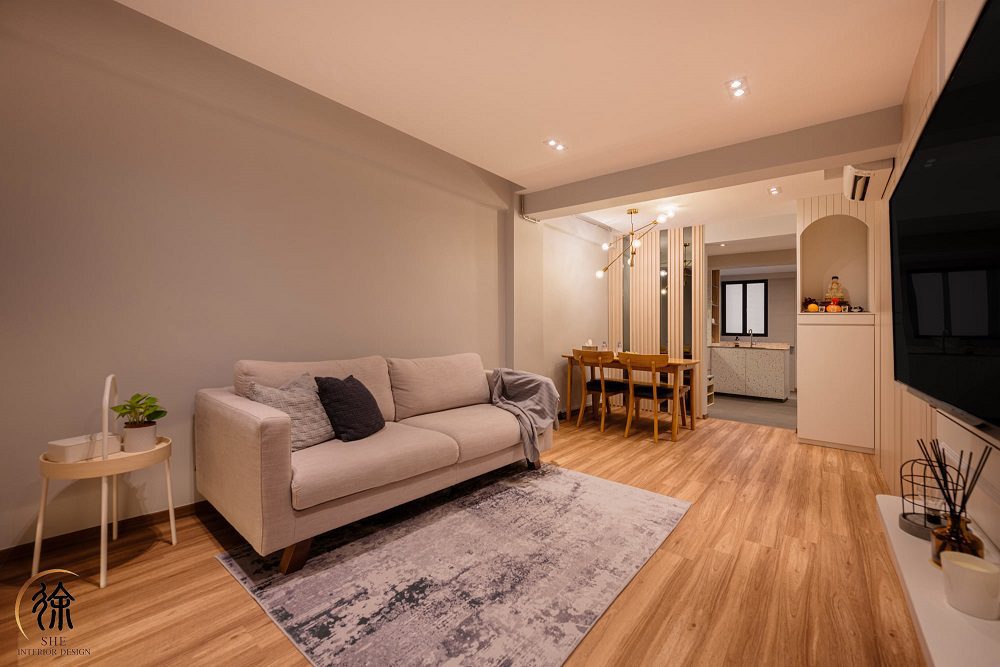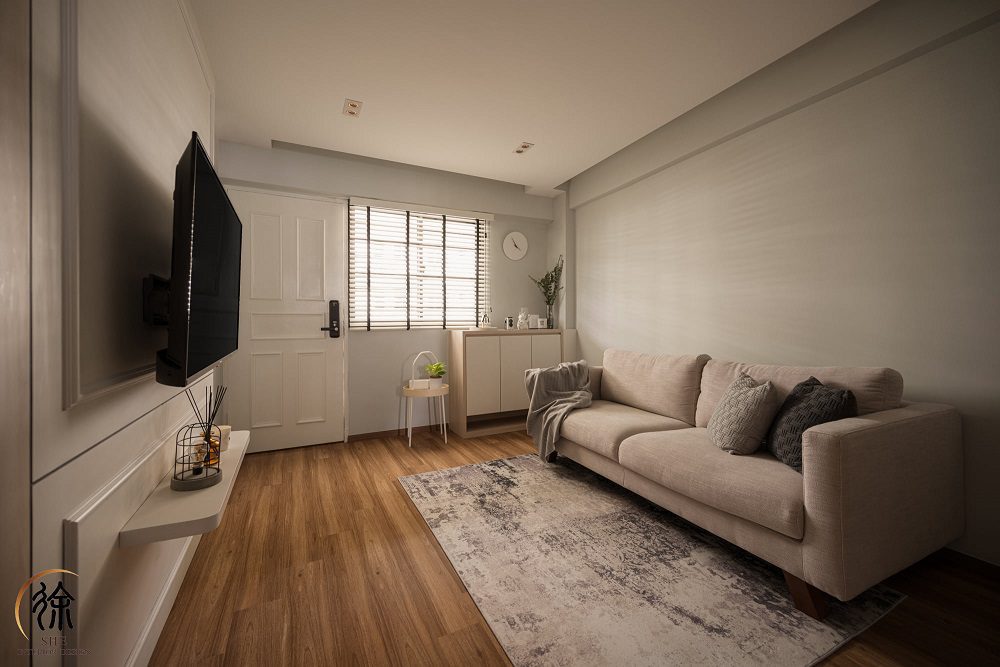In today’s fast-paced world, people are becoming increasingly conscious of the impact of their environment on their overall well-being. With the rise of sustainable design practices, there is a growing emphasis on creating healthy interiors that promote wellness. This article delves into the various considerations and strategies involved in designing interiors that prioritize both sustainability and the health of occupants.

The Link between Sustainable Design and Wellness: How does sustainable design impact wellness?
Sustainable design goes beyond minimizing the environmental impact of buildings; it also aims to create spaces that positively contribute to the health and well-being of occupants. Healthy interiors promote better indoor air quality, natural light, ergonomic comfort, and connection with nature, among other factors. By considering these aspects, designers can create spaces that support physical, mental, and emotional well-being.
Indoor Air Quality: The Foundation of Healthy Interiors
Indoor air quality plays a vital role in occupant health. To ensure healthy interiors, designers should focus on proper ventilation, filtration systems, and the use of low-emitting materials. Volatile organic compounds (VOCs), which are commonly found in paints, adhesives, and furnishings, can have harmful effects on health. By selecting materials with low VOC emissions, designers can contribute to improved air quality and the well-being of occupants.
Natural Light and Biophilic Design: Enhancing Well-being
Natural light has a profound impact on human health and well-being. It helps regulate circadian rhythms, improves mood, and boosts productivity. Incorporating ample windows and skylights into interior spaces allows for the penetration of natural light, reducing the reliance on artificial lighting. Biophilic design principles, which integrate nature into the built environment, further enhance the well-being of occupants by fostering a connection with the natural world.
Ergonomics and Comfort: Supporting Physical Health
Creating ergonomic and comfortable spaces is essential for promoting physical health. Ergonomic furniture, adjustable workstations, and proper posture support can prevent musculoskeletal disorders and improve productivity. Designers should consider human-centered design principles and ensure that furniture and layouts promote proper body alignment, movement, and comfort.
Noise Reduction and Acoustics: Creating a Tranquil Environment
Excessive noise can have detrimental effects on health and well-being. To create healthy interiors, designers should incorporate strategies to reduce noise levels, such as sound-absorbing materials, acoustic panels, and spatial planning techniques. By minimizing noise pollution, interior spaces can provide tranquility and improve concentration, productivity, and overall comfort.
Non-Toxic Materials and Finishes: Minimizing Harmful Chemicals
Choosing non-toxic materials and finishes is crucial for creating healthy interiors. Many conventional materials contain harmful chemicals, such as formaldehyde and phthalates, which can negatively impact indoor air quality. Designers should opt for eco-friendly alternatives, such as low-VOC paints, natural fiber carpets, and sustainably sourced wood, to minimize exposure to toxic substances.
Thermal Comfort: Achieving Optimal Temperature Control
Maintaining optimal thermal comfort is essential for occupant well-being. Designers should consider insulation, proper HVAC systems, and energy-efficient windows to regulate temperature and minimize drafts. By providing a comfortable thermal environment, interior spaces can enhance productivity, focus, and overall satisfaction.
Connectivity with Nature: Incorporating Green Spaces
Bringing nature indoors has numerous benefits for well-being. Designers can integrate green spaces, such as living walls, indoor gardens, or rooftop terraces, to create a sense of connectivity with the natural world. These elements improve air quality, reduce stress, and enhance the visual appeal of interior spaces, contributing to the overall wellness of occupants.
Mindful Design: Enhancing Mental Health and Productivity
Mindful design principles emphasize creating spaces that support mental health and well-being. Designers can incorporate elements such as meditation rooms, quiet areas, and flexible layouts to promote relaxation, focus, and creativity. By designing with mindfulness, interior spaces become nurturing environments that encourage positive emotions, reduce stress, and enhance productivity.
Water and Energy Efficiency: Sustainable Resource Management
Sustainable design encompasses efficient resource management. Designers should incorporate water-saving fixtures, such as low-flow faucets and toilets, and energy-efficient appliances and lighting systems. By reducing water and energy consumption, interior spaces contribute to a sustainable future while also lowering utility costs for occupants.

Accessibility: Designing for Inclusivity and Universal Design
Designing interiors with accessibility in mind ensures that spaces are usable by people of all abilities. Barrier-free design, wider doorways, ramps, and accessible fixtures contribute to inclusivity and make spaces welcoming to everyone. By embracing universal design principles, designers create interiors that accommodate diverse needs and foster a sense of equality and dignity.
Maintenance and Cleaning: Ensuring Long-Term Health
Maintaining healthy interiors requires proper cleaning practices and maintenance. Designers should consider materials and finishes that are easy to clean and resistant to dirt and allergens. Additionally, promoting regular cleaning schedules and providing clear maintenance guidelines contribute to the longevity and well-being of interior spaces.
Collaborative Spaces: Fostering Social Well-being
Collaboration and social interaction are essential for human well-being. Designers can create collaborative spaces that encourage communication, teamwork, and creativity. Flexible furniture arrangements, communal areas, and shared amenities promote social connections and foster a sense of community within interior spaces.
Art and Aesthetics: Inspiring Creativity and Happiness
The integration of art and aesthetics in interior design enhances the overall experience and well-being of occupants. Artwork, color schemes, and thoughtful aesthetics contribute to a visually appealing environment that sparks creativity and happiness. By curating meaningful and inspiring spaces, designers can uplift the mood and enhance the overall well-being of occupants.
FAQs
- How can I improve indoor air quality in my home or office?
Improving indoor air quality can be achieved by ensuring proper ventilation, using low-emitting materials, and regularly maintaining HVAC systems. Additionally, incorporating air purifiers and keeping indoor plants can help filter and purify the air.
- What are some eco-friendly materials that can be used in interior design?
Eco-friendly materials include reclaimed wood, bamboo, recycled glass, natural fibers (such as cotton or wool), and low-VOC paints. These materials are sustainable, non-toxic, and contribute to healthier indoor environments.
- How does natural light affect productivity?
Natural light promotes better mood, alertness, and focus, which positively impact productivity. It helps regulate circadian rhythms, reducing fatigue and enhancing cognitive function.
- What is biophilic design?
Biophilic design is an approach that incorporates elements of nature into the built environment. It aims to strengthen the connection between humans and the natural world, providing numerous benefits for well-being, such as reduced stress, improved cognitive function, and increased creativity.
- How can I make my interior space more accessible?
To make interior spaces more accessible, consider implementing features such as wider doorways, ramps, grab bars, and accessible fixtures. Designing with universal design principles ensures that spaces are usable by individuals of all abilities.
Conclusion
Creating healthy interiors that prioritize wellness is an essential aspect of sustainable design. By considering factors such as indoor air quality, natural light, ergonomic comfort, and connectivity with nature, designers can positively impact the physical, mental, and emotional well-being of occupants. Through mindful design practices and the integration of sustainable principles, interior spaces become nurturing environments that foster health, happiness, and productivity.
In conclusion, choosing SHEinterior for their specialized Healthy Home Design services offers compelling reasons to transform your space into a haven of wellness. With their expertise in creating healthy interiors, tailored solutions that cater to your unique needs, and their ability to seamlessly integrate sustainability with design aesthetics, SHEinterior stands out as a trusted partner in crafting spaces that promote physical, mental, and emotional well-being. By entrusting your home to SHEinterior, you can experience the perfect blend of expertise, personalization, and style, resulting in a sanctuary that not only supports your health but also delights your senses.



